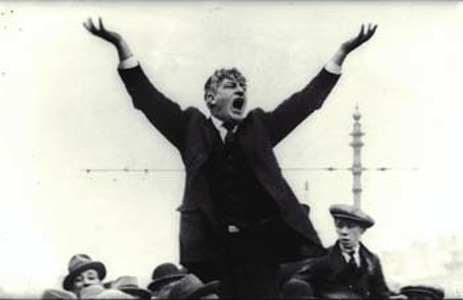 |
Jim Larkin in his famous pose.
Photograph courtsey of sndcdn.com |
This is the 100th year since the Dublin Lockout. The strike which was organised by the Irish Transport and General Workers Union. This union was lead by Jim Larkin and he would lead the strikers for the next several months. The main protagonist in this fight was
Jim Larkin and
William Martin Murphy
. Murphy owned the Dublin Tram company and the
Irish Independent.
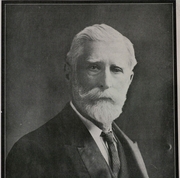 |
William Martin Murphy.
Photograph courtesy of rasset.ie |
The workers of the Dublin Tram Company which was owned by
William Martin Murphy where forbidden to join the
ITGWU. So on the 26th of August all workers stopped working the trams and the strike began.
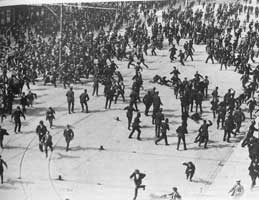 |
Dublin Police charge crowds.
Photograph courtsey of wikimedia.org |
On the 30th of August the Dublin Metropolitan Police issued a warrant for Larkin's arrest and also baton charged crowds which resulted in the death of James Nolan. The next day Jim Larkin appeared in disguise at the Imperial Hotel, he was arrested and more rioting ensued.
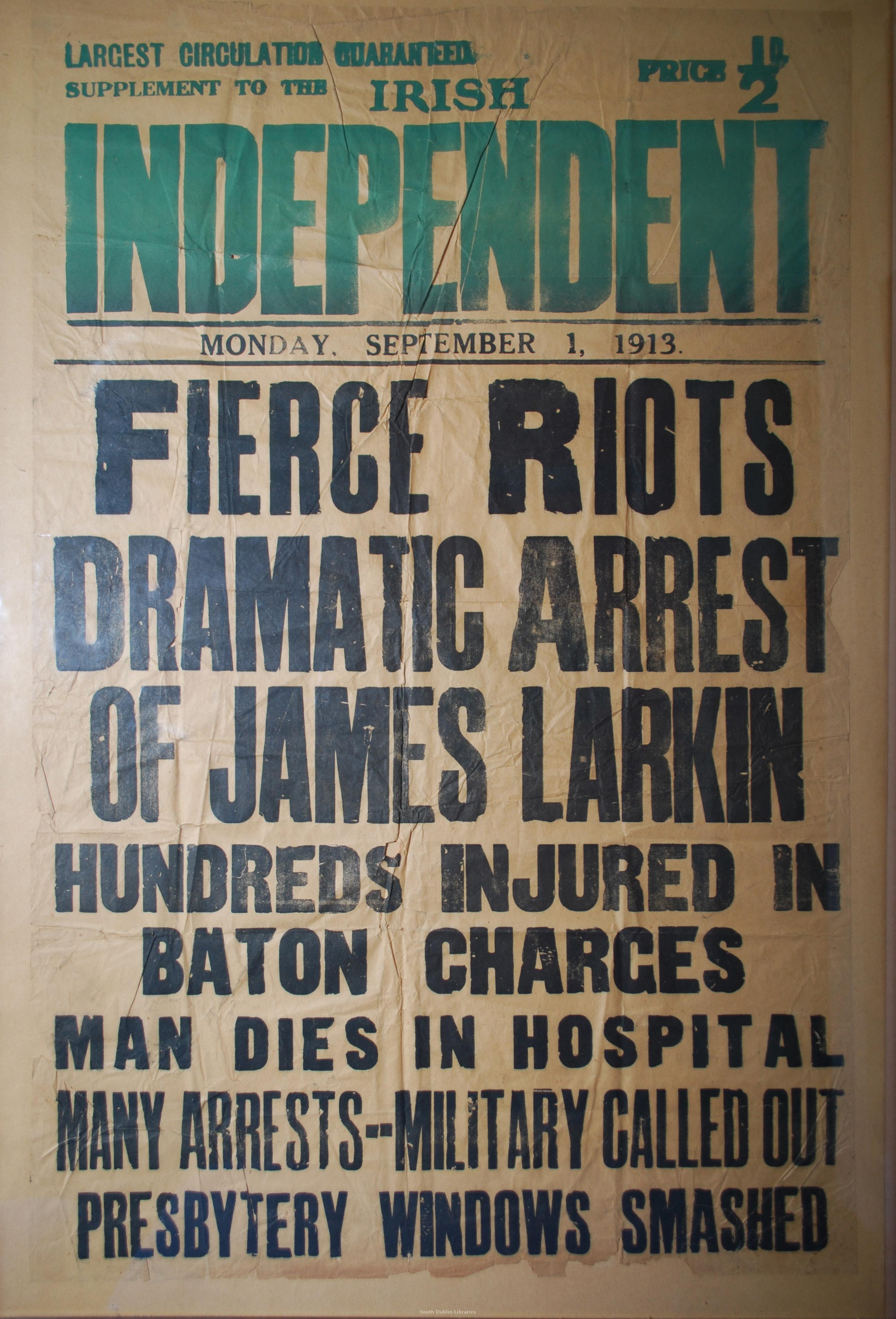 |
Murphy's newspaper has story of strikes.
Courtesy of southdublinlibraries.ie |
On the 3rd of September William Martin Murphy meet four hundred employers and they came to agreement not to employ members of the ITGWU and this became the lockout. On the 4th of September John Byrne a labour died from injuries he received on the 30th of August. The meeting with the employers was the start of the lockout which affected over 20,000 workers and their families.
 |
Food ships bring food to the hungry.
Photograph courtesy ucc.ie |
By the 27th of September food ships where arriving from Britain with food parcels for striking workers. The strike moved along with no compromise on either side. In October plans where being made to send children to Britain. By the middle of November Larkin and
James Connolly had organised the
Irish Citizen Army to try and protect workers from over zealous police.
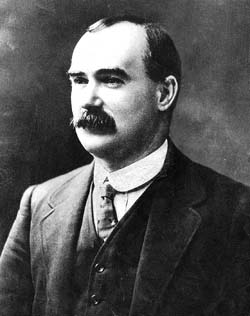 |
James Connolly.
Photograph courtsey of wsm.ie |
The Irish Citizen Army would also play a part in the 1916 rising. In December of 1913 the workers and their families had more or less had enough and the strike and Lockout would come to an end in January 1914 and went back to work.
 |
Irish Citizens Army.
Photograph courtsey ucc.ie |






No comments:
Post a Comment